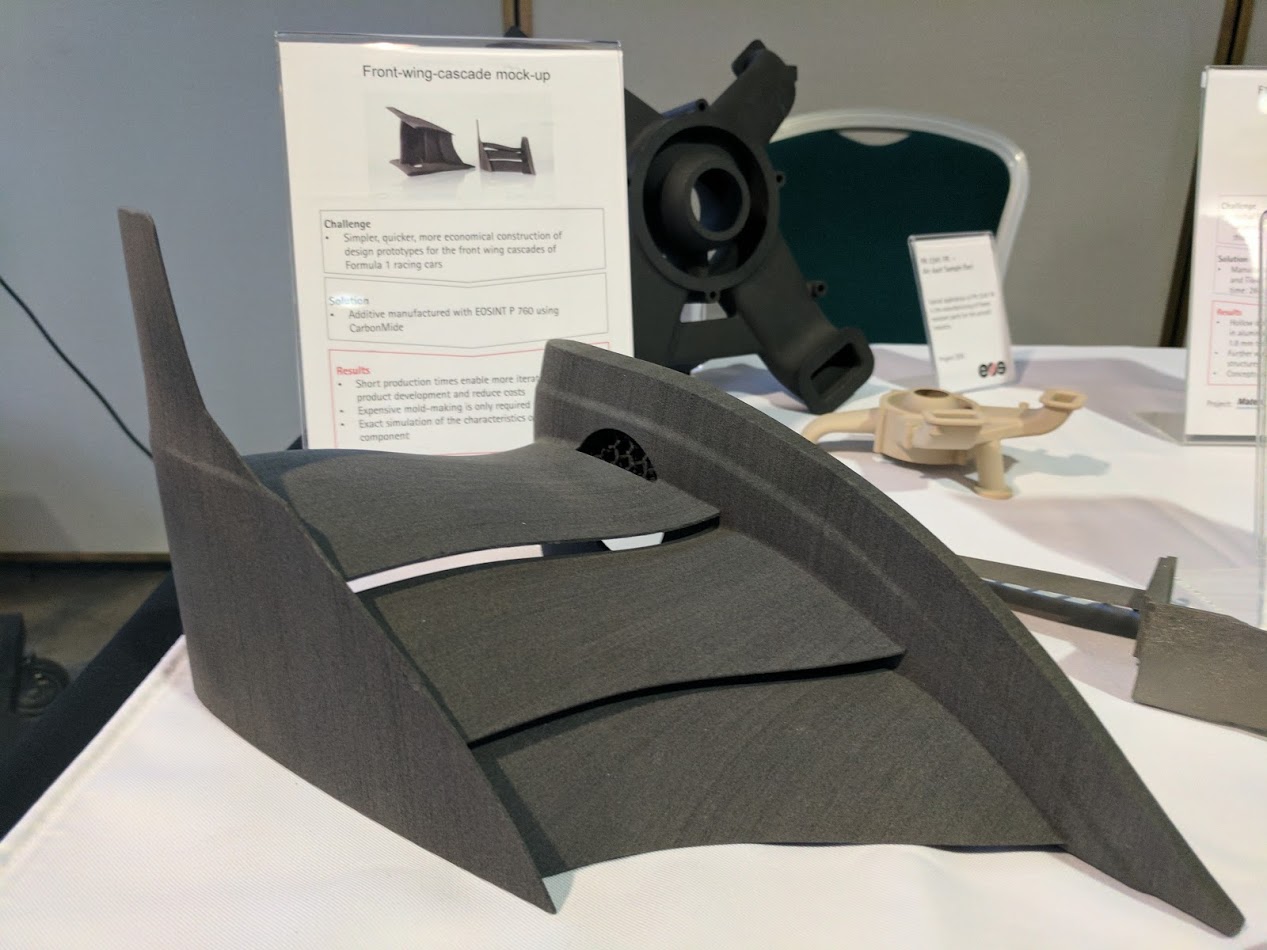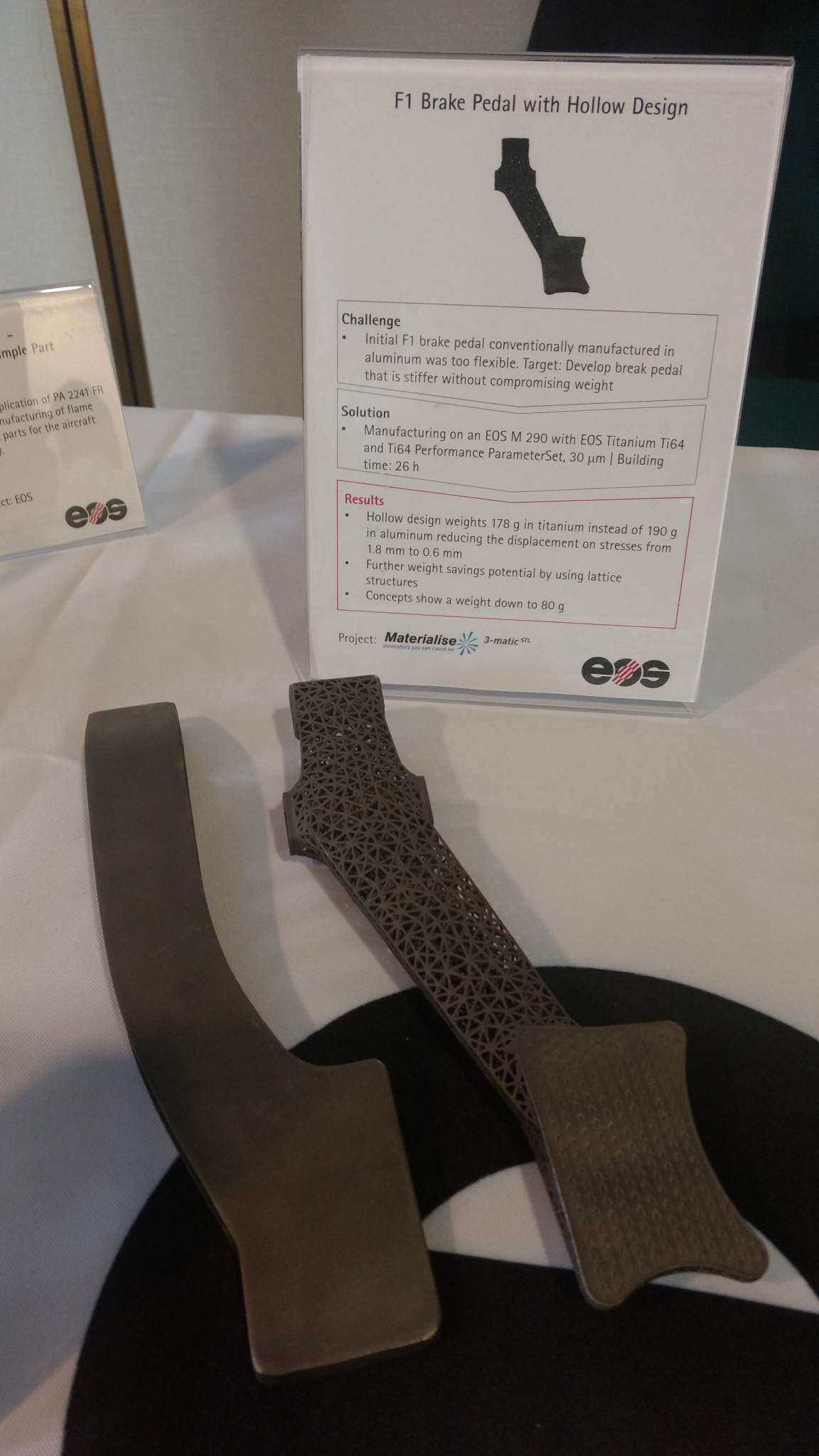British Formula One team Williams Racing is preparing for the new 2017 season by using 3D printing as a prototyping tool.
To design their new Formula One FW40 car, the Oxfordshire team utilized a partnership with 3D printing company EOS. The FW40 was unveiled recently at the Circuit de Barcelona-Catalunya for a week of testing, with the new F1 season now just weeks away.
The 2017 F1 season begins with the Australian Grand Prix on the 24th March. New rule changes for this year mean the car designs will change dramatically and as a result, many teams have looked towards 3D printing to speed up the iteration process.
3D Printing Industry got a firsthand glimpse of German company EOS’s 3D printed F1 designs at the recent Additive Manufacturing for Aerospace, Defense and Space (AMADS) conference.

EOS front-wing-cascade
At the AMADS conference, EOS showcased a front wing design created with their laser sintering process, as well as an F1 brake pedal and various other 3D printed components. EOS did not disclose which team the designs were created for but the company are an official partner of Williams Racing. The design showcased by EOS was created on their EOSINT P 760 machine. This part was printed in CarbonMide material which is a “carbon-fiber reinforced polyamide.”
Carbon fiber is the material of choice for many F1 car components but until recently it has been a difficult material to 3D print. This means that the use of 3D printing remains largely as a prototyping tool. However, with a number of advancements in this area in recent months, this may change in the future. Currently, a team of researchers in Russia are studying the 3D printing of carbon fiber components. Similarly, a breakthrough into 3D printed carbon fiber has been made at the Lawrence Livermore National Laboratory.

Formula One 3D printing
Adapting to this year’s new car changes, many other F1 teams have turned to 3D printing companies.
For example, Ferrari used 3D printing to develop their new 2017 engine. Ferrari utilized the technology to redesign pistons for their new engine. While, McLaren has recently signed a four-year partnership with U.S 3D printing company Stratasys. In the future, developments into 3D printing materials will allow the technology to create more functional components. Enabling 3D printing to move away from wind-tunnel testing to the racetrack.
Sign up to the 3D Printing Industry newsletter for the latest on 3D printing in F1 and follow us on twitter and Facebook.
Featured image shows Williams’ new FW40 car. Photo via Williams Racing on twitter.



